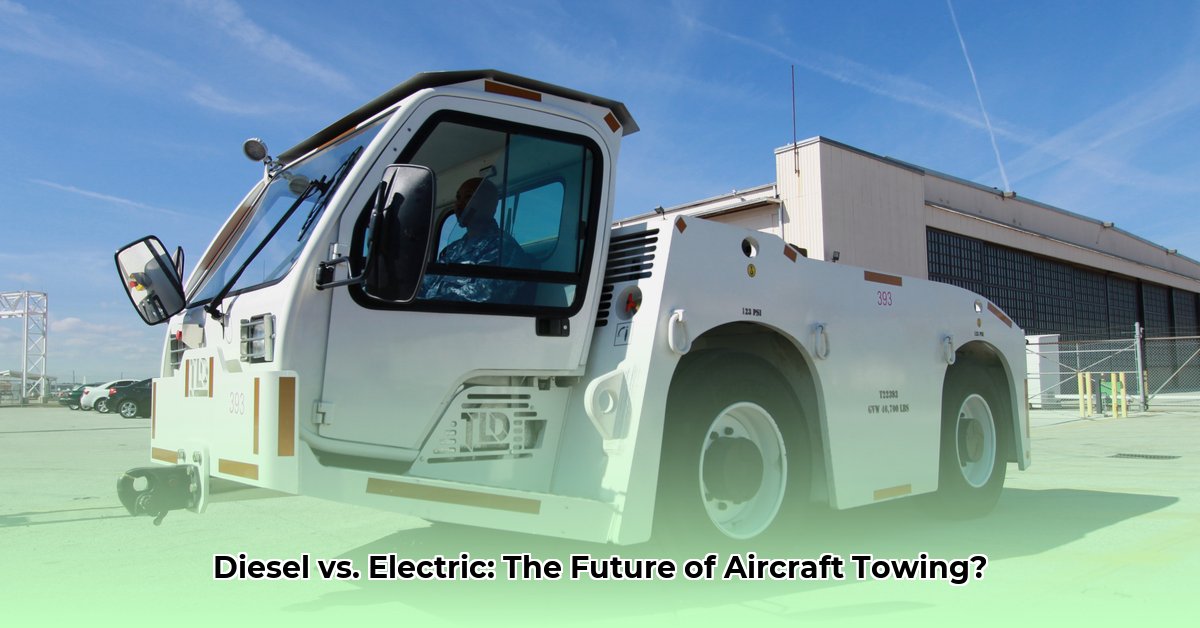
Aircraft Towing Tractor: Diesel vs. Electric – A Detailed Comparison
Choosing the right aircraft towing tractor is crucial for military bases and airports. Oshkosh AeroTech offers both diesel and electric models, each with distinct advantages and disadvantages. This report analyzes these differences to aid informed decision-making. For more information on Oshkosh AeroTech's offerings, see their aircraft tractors page.
Power and Performance: Diesel vs. Electric Capabilities
Diesel aircraft tractors are established workhorses, offering robust towing capabilities exceeding 135,000 pounds in some configurations. Their reliability and maneuverability are well-proven in diverse airfield conditions. Electric tractors, particularly Oshkosh's LEKTRO line, provide comparable towing capacity in many applications. However, their key strengths lie in reduced noise pollution and significantly lower emissions, contributing to a greener operational environment. They typically require less maintenance due to fewer moving parts.
How do diesel and electric models compare in terms of towing capacity and maneuverability in tight spaces? While both offer excellent maneuverability, diesel models generally demonstrate a slight edge in maximum towing capacity, particularly for the heaviest aircraft. This difference, however, is often negligible for many common applications.
Safety Features: Prioritizing Operational Security
Oshkosh prioritizes safety across both diesel and electric models. Features include notch-back designs, sloped fenders improving operator visibility, bright warning lights, sophisticated hydraulic systems for precise control, and sturdy suspension systems for smooth operation even under heavy loads. LEKTRO models incorporate intuitive cradle-and-strap systems for easier and safer aircraft attachment.
What safety features are common to both diesel and electric Oshkosh AeroTech tow tractors? Both vehicle types share key safety features like improved visibility, advanced hydraulic systems, robust braking systems, and warning lights.
Cost Analysis: Initial Investment vs. Long-Term Operational Expenses
Electric LEKTRO tractors command a higher initial purchase price compared to diesel models. However, long-term cost savings can be significant. Reduced maintenance needs (fewer moving parts), and elimination of fuel costs yield lower operational expenses over the vehicle's lifespan. A thorough cost-benefit analysis, considering your specific operational context, is essential to determine the optimal choice.
How do the long-term operational costs of diesel and electric tow tractors compare? While electric tractors have higher upfront costs, they typically result in lower long-term costs due to reduced fuel and maintenance expenses. However, the cost of battery replacement must be factored into the long-term operational cost analysis.
Environmental Impact: Emission Reduction and Sustainability
LEKTRO's zero-emission operation is a key benefit, particularly given growing environmental concerns within the defense sector. Electric tractors offer a direct path to carbon neutrality goals. Diesel tractors, while a mature technology with established support networks, contribute significantly to emissions. The relative importance of environmental impact will vary among organizations.
Which type of tow tractor offers the greatest environmental advantage? Electric tow tractors offer a significant environmental advantage due to zero tailpipe emissions and reduced noise pollution.
Decision-Making Framework: A Strategic Approach
Selecting the appropriate tractor involves careful consideration. No single solution fits all needs.
Steps to Guide Your Decision:
- Assess Operational Needs: Determine required towing capacity, frequency of use, and typical aircraft weights.
- Perform a TCO Analysis: Compare the total cost of ownership for both options, incorporating purchase price, fuel/electricity, maintenance, repairs, and potential downtime. Consider potential government incentives for eco-friendly technologies.
- Evaluate Environmental Goals: Determine the importance of emission reduction within your organization's priorities.
- Evaluate Infrastructure: Assess existing infrastructure and plan for necessary upgrades (e.g., charging stations for electric tractors).
- Consider a Pilot Program: Initiate a small-scale trial to evaluate performance in your specific setting.
Risk Assessment: Potential Challenges and Mitigation Strategies
| Technology | Risk Category | Likelihood (Low, Medium, High) | Impact (Low, Medium, High) | Mitigation Strategy |
|---|---|---|---|---|
| Diesel Tow Tractors | Fuel Costs | Medium | Medium | Explore alternative fuels; optimize usage; negotiate fuel contracts. |
| Diesel Tow Tractors | Maintenance | Low | Low | Regular preventative maintenance; establish relationships with reliable parts suppliers. |
| LEKTRO Tow Tractors | Battery Life | Low | Medium | Implement robust battery management systems; plan for timely battery replacements; explore extended warranties. |
| LEKTRO Tow Tractors | Charging Time | Low | Low | Invest in rapid charging infrastructure; implement efficient charging schedules. |
| LEKTRO Tow Tractors | Infrastructure Support | Medium | Medium | Conduct a thorough assessment of existing infrastructure; plan for upgrades or additions where needed. |
Navigating the Regulatory Landscape: Adapting to Future Standards
The regulatory environment for airfield operations is dynamic. Future regulations may favor electric vehicles due to stricter emission standards and sustainability priorities. Staying informed about regulatory changes is crucial to ensure compliance.
Choosing between diesel and electric aircraft towing tractors is a long-term investment. Careful consideration of operational needs, a comprehensive cost-benefit analysis, and attention to the environmental and regulatory landscape are crucial for optimizing efficiency, sustainability, and operational readiness. Ongoing technological advancements will likely further refine the cost-effectiveness and performance of both diesel and electric models.